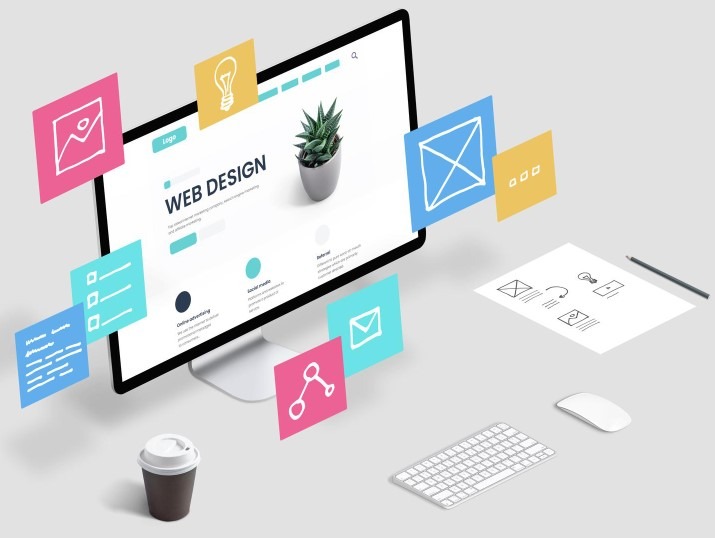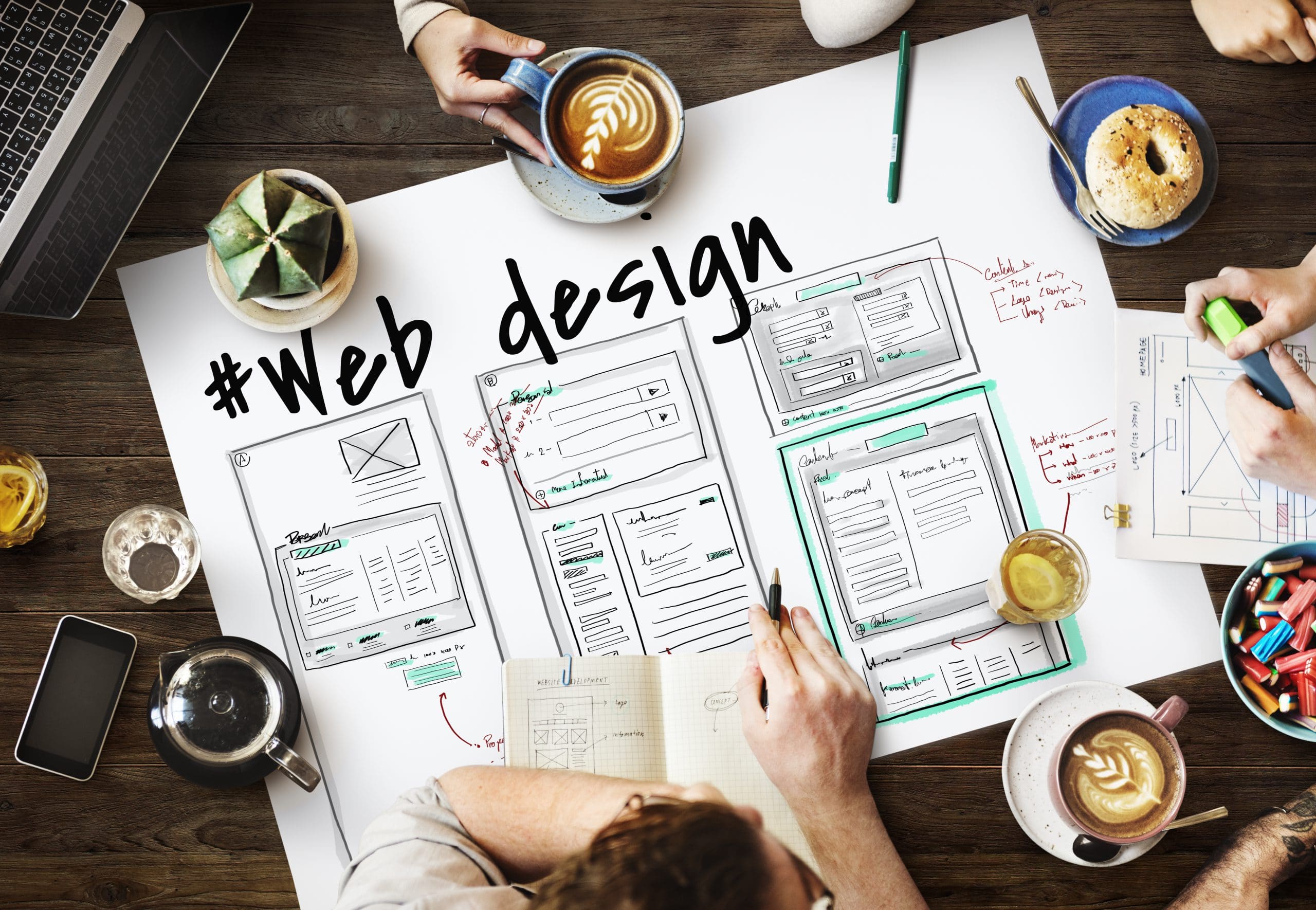Exploring Real Case Studies That Prove the Effectiveness of Web Design In Guildford
Just How to Enhance Individual Experience Through Strategic Internet Design
In the realm of electronic innovation, customer experience (UX) has actually come to be the cornerstone of effective web layout. A critical, user-centered strategy, emphasizing visual uniformity, intuitive formats, and responsive style, can considerably improve an internet site's usability and allure. As we explore these principles in detail, the value of integrating individual responses and the function of UX in individual retention will likewise be checked out, welcoming a much deeper understanding of this vital aspect of internet style.
Recognizing the Significance of Customer Experience in Website Design
The essence of internet style lies not merely in aesthetics, but fundamentally in the individual experience it supplies. Customer experience, or UX, describes the total experience a person has while interacting with a web site or web application, particularly in regards to how comfortable and satisfying it is to utilize (Web Design In Guildford). It is an essential aspect of web style, as it directly influences the individuals' perceptions, actions, and general interaction with the web site
A properly designed website with a bad individual experience belongs to a lovely structure with an inadequately prepared inside; it may look appealing externally, yet it stops working to offer its designated function successfully. It may discourage individuals from remaining on the internet site, leading to high bounce rates, reduced user involvement, and ultimately, failure to accomplish the site's goals. This highlights the importance of incorporating user experience into the web design process right from the outset.
Using User-Centered Style Concepts
The application of user-centered style principles starts with recognizing user habits. This knowledge develops the basis for producing an effective user interface style. These two essential components, when masterfully integrated, bring about an improved user experience on any kind of site.

Recognizing Individual Behavior
Why do users behave the means they do on internet sites? User actions is determined by a wide range of elements, principal amongst them being their details demands and choices, prior online experiences, and general internet savviness. Utilizing this knowledge, internet developers can create more reliable, user-friendly sites that meet the needs of their target market, thereby improving user experience.
Effective User Interface Design

Leveraging Receptive Layout for Optimum Viewing
Moving on in the discourse, the attention now moves to the value of leveraging receptive layout for optimal watching. This includes exploring the process of implementing receptive website design and understanding its effect on user experience. The occurring discussion aims to clarify the benefits of optimal viewing and how responsive style promotes it.
Implementing Responsive Website Design
Utilizing the power of responsive internet style is a vital step towards improving individual experience. These elements combined produce a receptive web layout that adjusts to the individual's needs. While the process might seem complicated, the end result is a much more obtainable and intuitive site, significantly enhancing the user experience.
Advantages of Optimal Watching

Additionally, receptive style can bring about enhanced search engine optimization rankings, as search engines favor sites that deal with several gadgets. Last but not least, it can minimize bounce rates and improve conversion rates as customers are less most likely to abandon websites that are easy to navigate. Therefore, ideal watching can significantly enhance individual experience, making it a crucial element of tactical internet style.
Incorporating Easy Navigation and Intuitive Layouts
Reduce and intuition in website navigation form the bedrock of customer complete satisfaction. If users struggle to locate what they are seeking, they are most likely to abandon the site and look Click This Link for choices. A tactical internet style need to include clear, easy-to-follow navigating and an intuitive design. This can be attained by arranging details in a hierarchical framework, with the most vital sections plainly featured.
Basic navigating menus, breadcrumb routes, and clickable switches direct users through the website effortlessly. Consistency in layout aspects across pages additionally adds to intuitive navigating. Placing the search bar or the shopping cart icon in the same spot on every web page permits customers to locate these features quickly.
Moreover, an instinctive format is one that anticipates customer needs. It places components and information where users anticipate them to be. This minimizes the cognitive lots on users, improving their total experience on the website.
The Role of Visual Style in User Experience
While the structure and layout of a website are considerable for customer experience, the aesthetic style plays an equally essential role. It is the aesthetic style that originally draws the individual's focus, making it a key element in developing an immersive and engaging experience. Visual style elements such as color, typography, photos, and icons communicate the brand name's message, produce a mood, and guide individuals' interactions on the web page. A well-executed aesthetic layout can not just bring in individuals but additionally assist them comprehend the content better and navigate the website a lot more quickly. A chaotic or irregular aesthetic layout can lead and confuse users to an unfavorable individual experience. Therefore, internet developers must strategically utilize visual style aspects to produce a intuitive and unified interface that enhances the general customer experience. This procedure calls for a deep understanding of the target individuals, their requirements, and choices, in addition to the brand's identity and goals.
Case Studies: Effective Customer Experience Design at work
In spite of the academic understanding on customer experience style, it gains actual value when used in sensible circumstances. Airbnb, a global on-line market, efficiently enhanced their user experience by redesigning their website.
In another instance, the New york city Times upgraded their web site to prioritize customer experience. They maximized their website for mobile usage, recognizing that a growing variety of their visitors accessibility information using mobile phones - Web discover this Design In Guildford. They likewise structured their content discussion, making it less complicated for visitors to navigate and discover pertinent write-ups. The results were a substantial rise in mobile traffic and individual involvement, showing the effectiveness of tactical web design in boosting individual experience. These instance research studies show that practical application of individual experience style can yield significant advantages.
Conclusion
To conclude, strategic web design is a crucial tool in improving user experience. By applying user-centric style concepts, leveraging responsive layout, incorporating instinctive navigation and designs, and utilizing the power of visual design, services can produce internet sites that are involving and pleasing for users. Reliable website design, showcased via numerous effective study, dramatically enhances customer involvement and retention rates, verifying its crucial role in digital success.
As we check out these principles in detail, the significance of incorporating user comments and the role of UX in individual retention will also be checked out, inviting a deeper understanding of this essential element of web design.
It might visit homepage hinder individuals from remaining on the web site, leading to high bounce rates, reduced user interaction, and eventually, failure to achieve the site's goals. A cluttered or irregular visual design can puzzle individuals and lead to a negative individual experience. Web designers must tactically use aesthetic style components to create a user-friendly and unified individual interface that improves the overall individual experience. The results were a substantial increase in mobile website traffic and customer involvement, demonstrating the effectiveness of critical web design in improving individual experience.